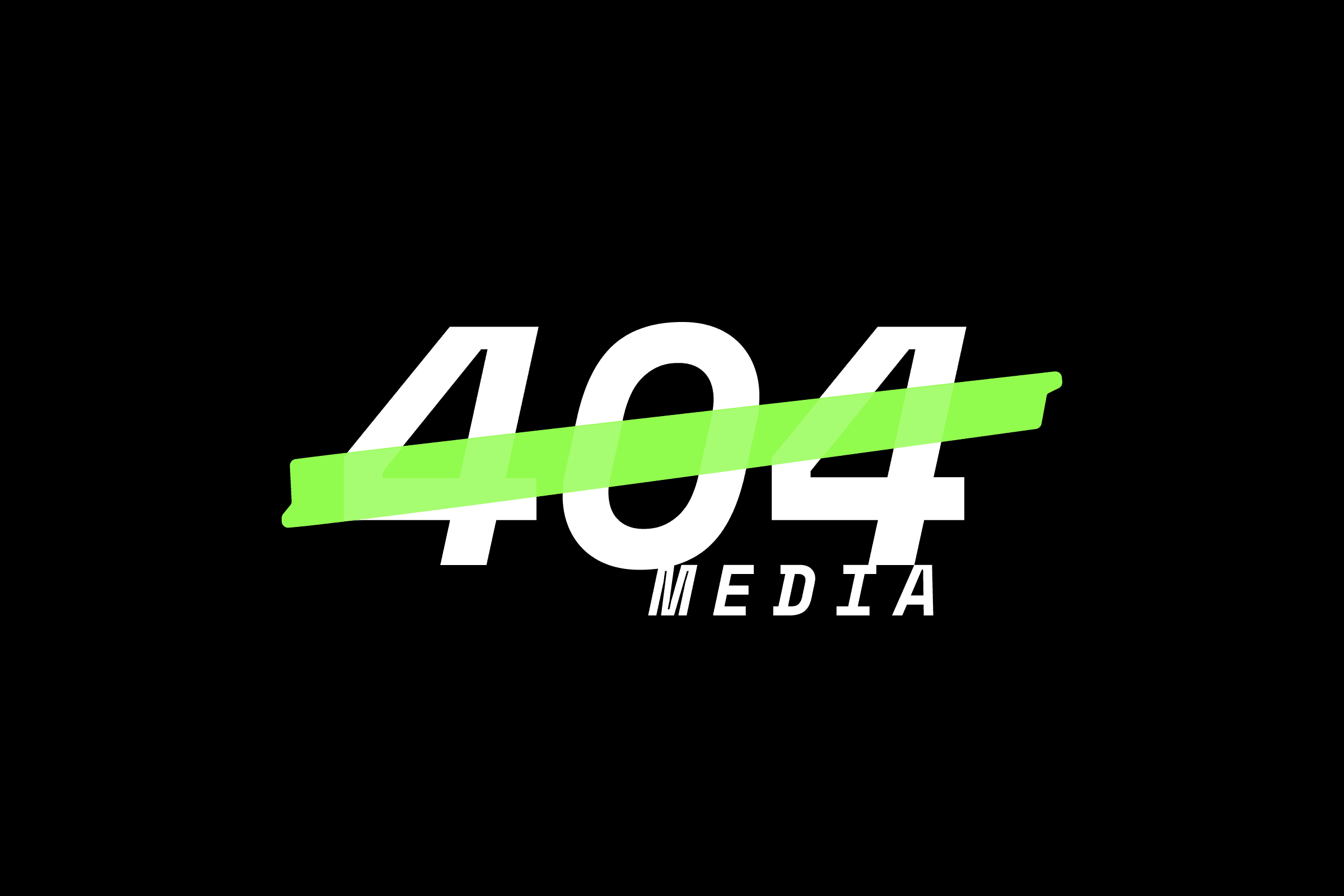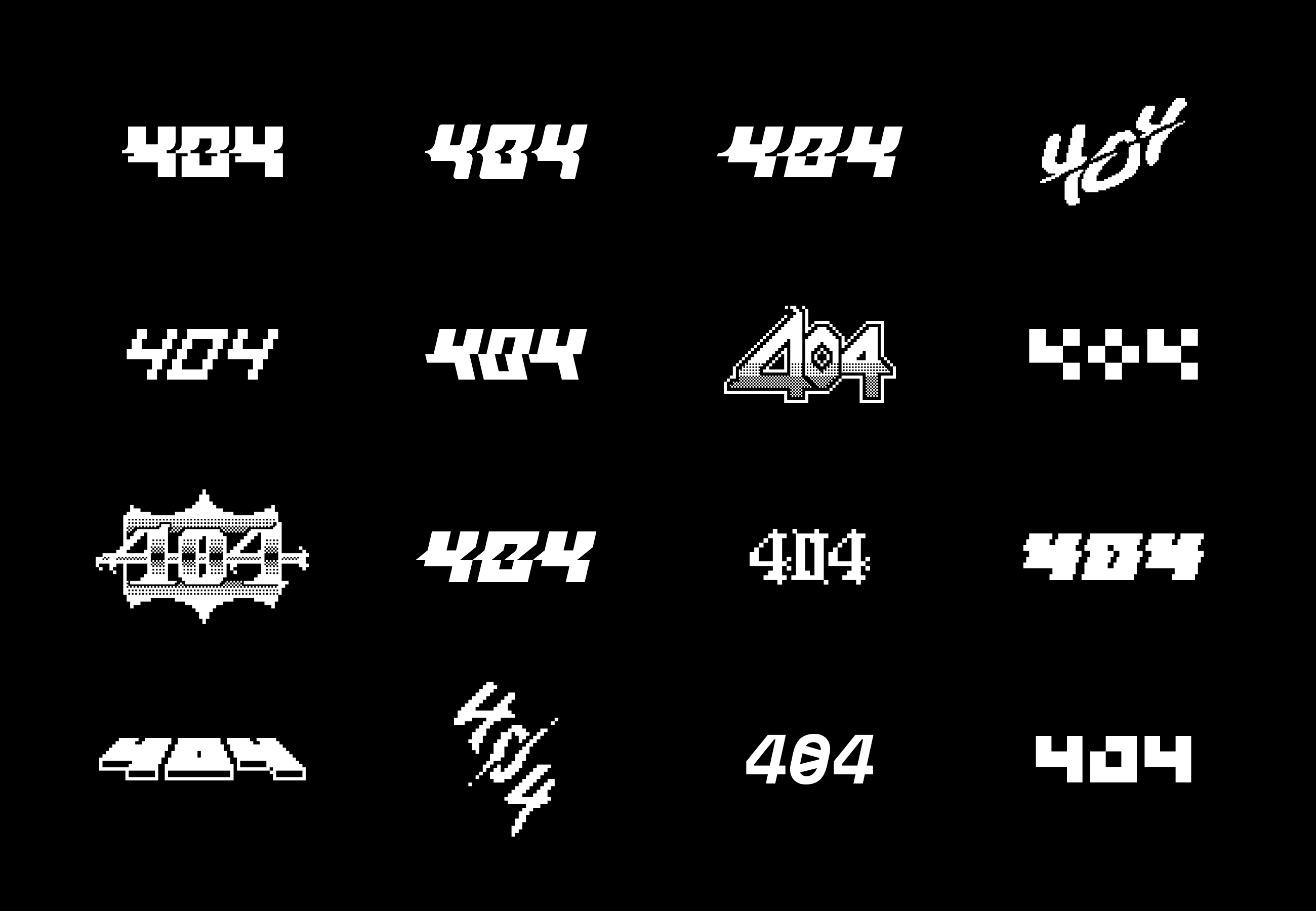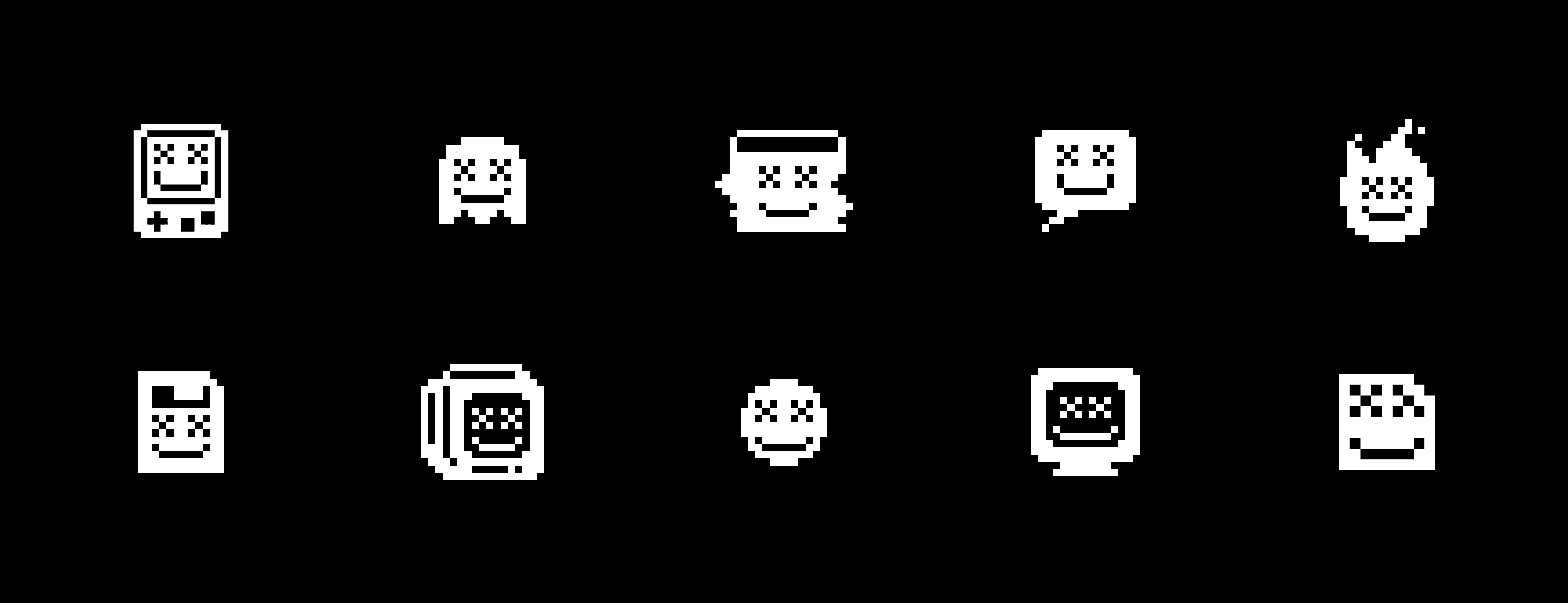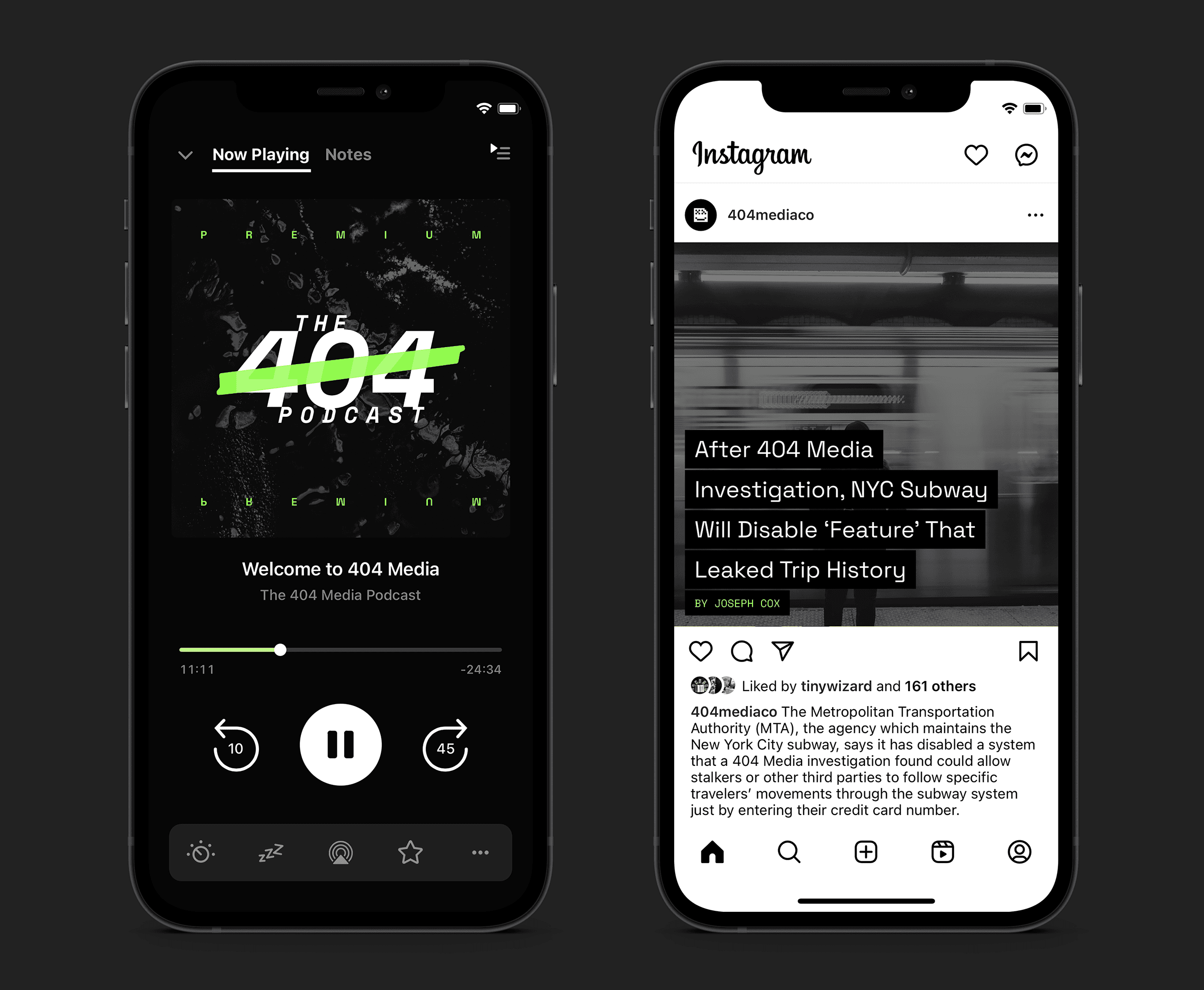Work > 404 Media
The tech outlet here to fuck up the internet
I joined Patreon in 2021 to help connect writers directly to their readers. But some journalists are foregoing platforms like Patreon and starting their own reader-supported businesses. Websites like Defector, Hell Gate, and Racket have proven that this model can be sustainable. So when my friends Sam, Emanuel, Jason, and Joseph – former Motherboard journalists who I worked with during my time at VICE – reached out about designing the website and visual identity for their new reader-supported media company, I was ecstatic.
The journalism business needs to change. Much has been written about social media traffic’s collapsing value, diminishing returns on display ads, and new formats vying for readers’ attention, but I believe the largest culprit for the digital media downturn is the same problem also affecting the tech industry – the impossible pursuit of limitless, venture-backed growth.
If you ask the readers (as I did hundreds of times during my time at VICE), they visit for the reporting. Duh. Everything else is a distraction. By cutting bloated executive salaries, inexplicable retention bonuses, unnecessary offices, and vendor bills for god-knows-what, there is still a living to be earned in journalism – especially if we accept that modest revenue is still worth pursuing.

The 404 Media logo lockup
404 Media is a tech outlet here to fuck up the Internet. Like they did during their time at Motherboard, the team will continue reporting on hacking, sex work, niche online communities, and other topics you rarely see covered by big tech outlets. It’s serious work – Motherboard was the first to report on deepfakes back in 2017, for example, and they had society-shifting impact on some of the world's biggest tech companies – but sometimes the Internet is weird and irreverent, so they are too.
The redacted treatment on the logo is inspired by their extensive FOIA reporting, but rather than fully obscuring the text, I used the Hackers-era green glow from an era of the Internet we all have nostalgia for. Their reporting is counter-culture – This isn’t TechCrunch – so the identity is as well.
Before we landed on a direction though, we looked at glitch effects, chunky pixels, ASCII art, and even warez for inspiration. Some of our unused options are pretty fun, even if they were too illegible to move forward with.

Unused logos
We also wanted a mascot to use as a favicon and on social media. These were some of my favorites.

Mascots
The website was built on Ghost – an independent, open source, non-profit platform. Similar to something like Patreon, Ghost's built-in membership tools helped us accept recurring payments from members. Unlike Patreon though, Ghost allowed us to build a fully customized website with its own branding and page templates.

The 404 Media homepage
I heavily modified an existing Ghost template by overhauling its visuals, creating new page templates, revamping the navigation, and adding a few easter eggs. You can even run DOOM on it. Everything should be able to run DOOM.

An article
Along with positive press covering the launch, their first two weeks had immediate real world impact – forcing the MTA to disable a feature that could be used to stalk riders, exposing a company led by member of Forbes’s 30-under-30 that was full of shit, and uncovering dangerous AI-generated content currently for sale on Amazon.

The 404 Media Podcast and Instagram account
If you’re interested in impactful technology journalism covering hacking, cybersecurity, sex, artificial intelligence, consumer rights, surveillance, and more, consider purchasing a membership. I’m confident that independent, reader-supported journalism is the way forward, but it’s up to us to help make it happen.